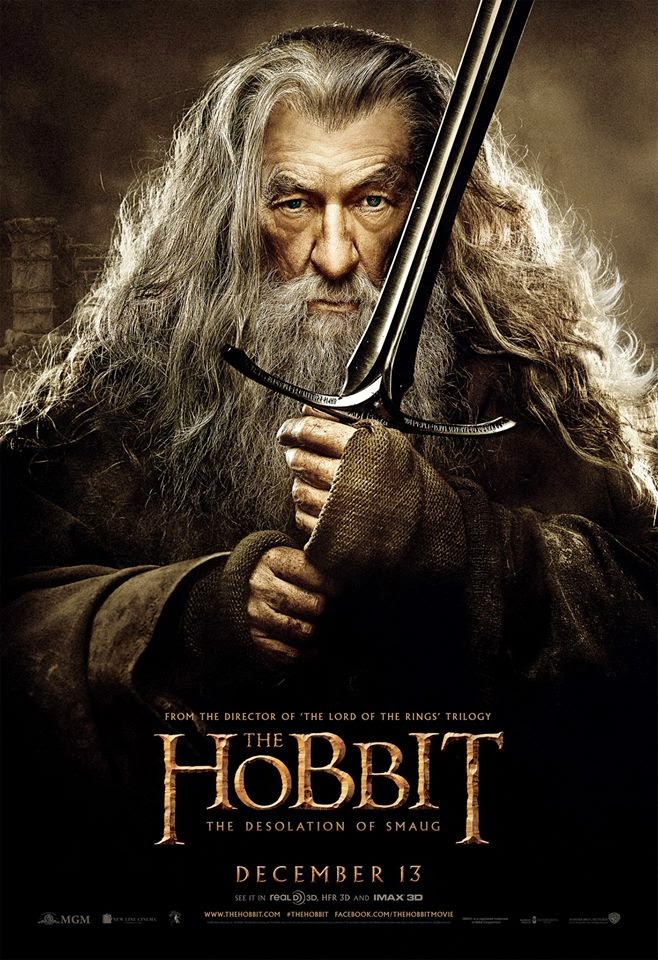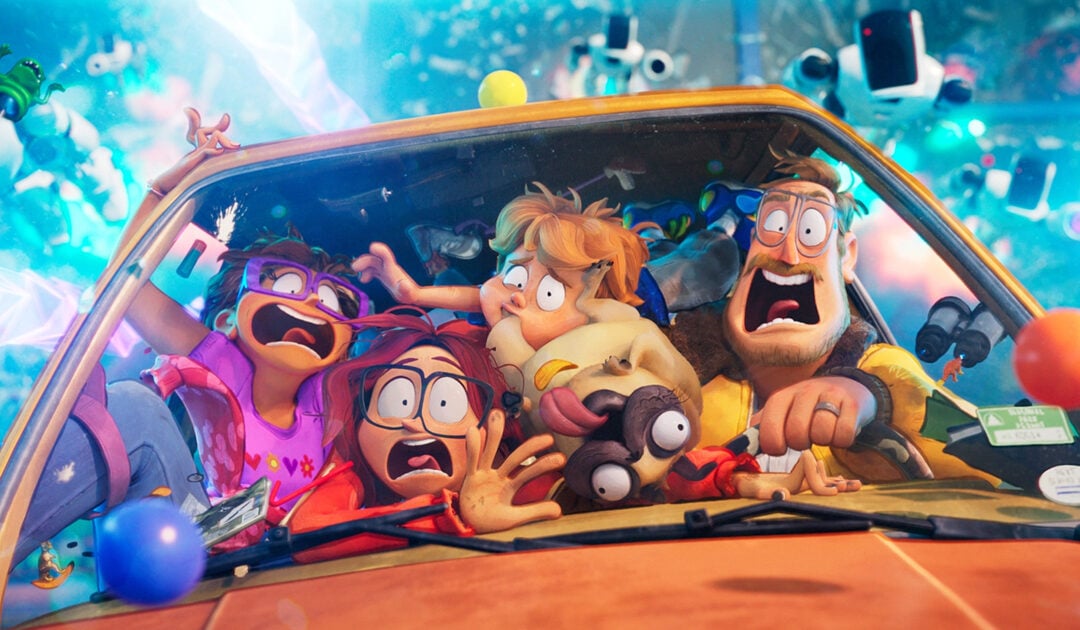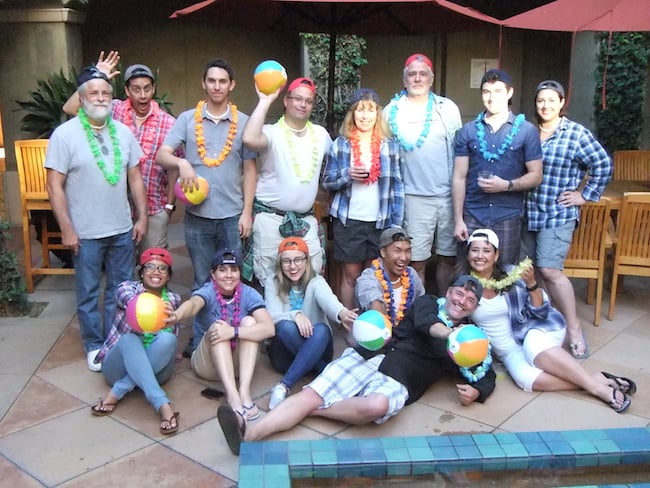The Hobbit: Desolation of Smaug captivates the audience with stunning visuals, terrifying spiders, and epic action sequences. Bringing the world of Middle Earth to life – and seamlessly integrating the work of hundreds of other artists – is the work of the CG compositor. Charlie Tait, head of compositing at Weta Digital, talked to Animation Mentor about the role of a compositor, how his team used Nuke to composite Smaug, the importance of collaboration and how to get a job at Weta Digital.
-The Animation Mentor Crew
—

Audiences who watch Warner Bros.’ The Hobbit: Desolation of Smaug all the way to the last credit can glimpse the impact of visual effects created by a crew of over 1000 at Weta Digital on the film. Among the hundreds of names rolling down the screen are those of artists on the compositing crew who pulled together work from the rest of the crew and smoothed it into the images seen onscreen.
“We’re the last people to touch the shots,” says Charlie Tait, head of compositing at Weta Digital. “Compositing is about taking things from different sources – greenscreen shots, CG elements, matte paintings, and so forth – all created by different people, putting them together, and making them look like a single event captured by a camera.”
Tait led a crew of 140 compositors who worked on the approximately 2000 visual effects shots created for this film, the second in director Peter Jackson’s Hobbit trilogy. In the film, the Hobbit Bilbo Baggins (actor Martin Freeman), Gandalf (Ian McKellen) and the dwarves continue their journey east. Along the way, they encounter a skin-changer named Beorn and giant CG spiders in Milkwood. They ride the wild waters of a sluice inside barrels. And, finally, journey to Lake-town and then to the Lonely Mountain. There, they face the great dragon Smaug (Benedict Cumberbatch) and an enormous pile of gold coins and other treasures.
Tait organized the crew by having compositing supervisors manage lead supervisors who in turn managed the artists. The compositing supervisors worked with visual effects supervisors responsible for self-contained sections of the film.
“We quite often had a pair of compositing supervisors working with a visual effects supervisor on a single sequence,” Tait says. “There was so much work to do, they could share the burden.”
Although most of their work would take place later, Tait and the compositing supervisors were involved with the film from the start. “We’d go to the dailies every day,” he says. “It was painful. We’d look at the gray-shaded layouts and the animation tests, and we would see what we’d have to do later. We’d think oh my god, there will be a mountain of stuff and we can’t start on it yet.”
Later, the compositing supervisors broke the sequences down into subsections and then delegated work on those subsections to the lead supervisors. “The lead position is quite a good one,” Tait says. “The leads have a smaller subset of shots than the compositing supervisors and they get to do quite a lot of design.”
A Month in Lake-town
Sometimes, the work would take months for a senior artist on the team to do. “Some people think the shots are all nice CG renders,” Tait says. “But, in compositing we do things that can’t be done in CG renders. We add the atmosphere and merge things to make sure a (filmed) plate and the CG look good together. I can show you a shot from Lake-town that a compositor worked on for most of a year.”
In that shot, the camera follows Bard the Bowman (Luke Evans) as his barge nears Lake-town and reveals the whole of the town from above. “The compositor worked on other shots as well, of course, but he started on the Lake-town scene early and finished it close to the end,” Tait says. “There is an excruciating amount of detail. He dialed everything in with a minute attention to detail – adding a tiny bit more atmosphere in the left side for building three, for example. Other departments would add more chimneys, change the water and the ice, maybe move the sky in the background, and the compositor had to constantly add these revisions.”
It might seem like having to change a scene already dialed in with excruciating detail could be frustrating, but Tait says that’s all part of the job. “If you’re new to compositing, it might be frustrating,” he says. “But, when you understand that this is a collaboration, that you are servicing everyone else by putting the shots together and trying to make the best of everyone’s work, you understand that when someone sends an update and it means you have to change what you did, you’re doing it for them. And, you’re making your shot look better, too. You have to be ready for that. You have to be flexible.”
At Weta Digital, artists throughout the pipeline keep tweaking and improving the shots all the way through post-production. “We have a monstrous render wall,” Tait says. “And Weta’s way of rendering CG is to keep relighting and rendering until the shot looks good.”
At some studios, each CG element comes to the compositors rendered in many passes – one with specular highlights, for example, another with a dirt texture, and so forth, that the compositors adjust and combine to achieve a final look. At Weta Digital, compositors work with final beauty renders.
“We get multiple passes, too,” Tait says. “But not multiple passes for each object. If we want to change the dragon’s brightness, we can do that, but we’re working on top of beauty passes that already look good.”
The compositing artists gather all the rendered “beauty” elements and combine them to create the final shot, often using “deep compositing” in Nuke. Artists including Tait himself.
Smaug
Even though Tait held the overall responsibility for compositing on The Hobbit: The Desolation of Smaug, he also supervised the sequence in Erebor with Smaug the dragon in the mountain of gold. “I love compositing,” he says. “I won’t give it up.”
For the sequence with Smaug and the mountain of gold coins, the production crew had filmed Bilbo (Freeman) on a set about 20 by 20 meters dressed with millions of gold coins and bits of treasure. But in the film, Bilbo is a small character in the midst of an area as huge as a cathedral filled with the small gold coins and, of course, the huge dragon that rises from beneath.
“The live-action terrain was complicated, detailed, and undulating,” Tait says. “And, there was an inconvenient large column in the foreground that we removed. We had a CG terrain with undulations and small details that we had to marry to the live action set. It was hard, and because this is a stereo film, we had to do it with a ridiculously high level of accuracy. The coins all had to be at the right depth. If not, the audience would see the split. The intersection had to be absolutely perfect.”
Tait and his team of compositors created the shot by bringing the architecture, the mountains of gold, and then the dragon and other rendered CG objects into Nuke. “With deep compositing, we could see the whole dragon,” Tait says. “We didn’t work with hold-outs. When we combined the layers, he was automatically held out without any intersections, and the layer ordering was automatic.”
Compositors working on the dragon spent much of their time tweaking the dragon’s eye. “This was a case in which we got different passes that we tweaked to get a different look,” Tait says. “Then, once a compositor got the balance right, we’d send it to the shader writers. They’d put a new palette out and the 40 compositors working on the dragon would get new dragon renders. That way the balance established for the eye in one shot appeared in all the other shots.”
Similarly, compositors on the film often collaborated with the lighting department, as well. “We work closely with the artists lighting a shot,” Tait says. “We talk a lot about what’s working and not working. Sometimes we sit together. Sometimes the lighters render more than we need; sometimes we need something more to bridge a gap. A lot of times we change a look in compositing and then that look gets rolled back into lighting.”
A Compositor’s Eye
When Tait hires compositors he looks for artists who are accomplished, observant, and have an eye for detail. “I look for people who have a certain creative flair; an ‘eye’ we call it,” he says. “People who are excellent with computers can get good at compositing, and people who are great at photography can get good at it. You can train enough to become good at it. But, can you look at something and know why it looks wrong straight away and what would make it look better?”
He notes the importance of understanding that compositors merge elements together until they look like a single event captured by a camera
“When I first started, I took notice of the way things looked and why they looked that way, and what the light was doing, to reproduce something accurately,” he says. “But, we need to emulate an abstraction. A photograph is a reasonable facsimile of a moment in time, but it isn’t the same thing. It’s a recording, not reality. The optics, the lighting effects, the way the edges look affect the recorded image. You have to be very observant about how things really look when photographed.”
That attention to detail carried Tait and the compositing crew all the way to the end of production. “We think we can always make a shot better,” he says. “So, we work on as much of the film as we can until there’s no time left. The movie finishes when people run out of time. And still, we want to make one more revision. But, when I see the film, even if it’s only a few days later, I can’t believe we made that. It’s incredible.”



